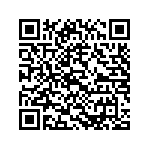The leading cause of car accidents

Distracted driving is any activity that takes the driver’s attention away from the road such as texting, talking on the phone, eating, or even changing the radio station. Distracted driving is a serious problem that has been increasing in recent years. According to the National Highway Traffic Safety Administration (NHTSA), distracted driving is a factor in at least nine deaths and 1,000 injuries each day in the United States alone. In 2016, a study found that nearly 50 percent of drivers admitted to, while driving, sending a text message, reading a text message, using social media or checking their phone for directions. Overall, nearly 60 percent of respondents admitted to using their cell phone at least once while driving.
A 2018 survey of more than 3,300 drivers by American Automobile Association Foundation for Traffic Safety illustrates a disconnect in driver behavior. While a large percentage of drivers (95.6%) said texting or emailing while driving is unacceptable, nearly half (49%) report talking on a hand-held device and nearly 35% have sent a text or an email while driving. While driving, cell phone usage creates enormous potential for injuries and deaths on U.S. roads. In 2020, 3,142 people were were victims of distracted driving and killed in motor vehicle crashes.
One of the main reasons why distracted driving is so dangerous is that it significantly increases the likelihood of a car accident. When a driver is distracted, they are less likely to be able to react quickly to unexpected situations on the road, such as a pedestrian crossing the street or another car suddenly changing lanes. Additionally, distracted drivers are more likely to swerve off the road or rear-end another vehicle.
There are many different types of distractions that can take a driver’s attention away from the road and one of them is texting. Texting requires visual, manual, and cognitive attention, which means that a driver’s eyes are off the road, their hands are off the wheel, and their mind is focused on something other than driving. According to the NHTSA, sending or reading a text takes a driver’s eyes off the road for an average of 4.6 seconds. A motor vehicle at the speed of 55 miles per hour is equivalent of driving the length of a football field blindfolded.
Another common distraction is talking on the phone, either through a handheld device or a hands-free system. While hands-free systems may seem safer, they still require cognitive attention, which means that the driver’s mind is not fully focused on the road. Eating and drinking while driving can also be distracting, as can adjusting the radio or GPS.
The consequences of distracted driving can be severe and long-lasting. Here are some of the most significant effects of distracted driving:
1. Increased risk of accidents
Distracted driving significantly increases the risk of accidents. According to the National Highway Traffic Safety Administration (NHTSA), distracted driving was a factor in over 2,800 deaths and 400,000 injuries in 2018 alone. Drivers who are distracted are more likely to fail to see or react to hazards on the road, such as other vehicles, pedestrians, or obstacles in the road.
2. Legal consequences
In many jurisdictions, distracted driving is illegal. Drivers caught texting, using social media, or engaging in other distracting activities behind the wheel can face fines, license suspensions, and even jail time. These legal consequences can have long-lasting effects on a person’s life, including limiting job opportunities and affecting their ability to obtain car insurance.
3. Emotional trauma
Distracted driving accidents can be emotionally traumatic for all those involved. Victims of distracted driving accidents may suffer physical injuries, emotional trauma, and long-term disabilities. Family members of those who are killed or injured in distracted driving accidents may also suffer emotional trauma and grief.
4. Financial costs
Distracted driving accidents can be expensive. In addition to medical bills, victims may also incur costs related to property damage, lost wages, and other expenses. These costs can add up quickly and can have long-term financial consequences for victims and their families.
5. Reputation damage
Distracted driving accidents can also damage a person’s reputation. In the age of social media, news of a distracted driving accident can quickly spread and lead to public shaming, negative publicity, and damage to a person’s personal and professional reputation.
6. Risk of permanent disability or death
Distracted driving accidents can result in permanent disability or death. Even relatively minor accidents can result in serious injuries, such as traumatic brain injuries or spinal cord injuries. In the most severe cases, distracted driving accidents can be fatal.
So, what can drivers do to avoid distracted driving? The first and most important step is to put away any distractions before getting behind the wheel. This means turning off the phone or putting it on silently, and not using it while driving. If you need to send a text or make a call, pull over to a safe location first. It’s also a good idea to plan your route ahead of time and set your GPS or radio before you start driving. If you need to adjust these things while on the road, do so safely and quickly. Finally, make sure to always wear your seatbelt and obey traffic laws. Remember, even a momentary distraction can have serious consequences, so it’s important to always keep your eyes on the road and your hands on the wheel.
To prevent distracted driving and beware of car accidents, following are the tips that drivers should be followed:
⦁ Avoid using electronic devices: One of the main causes of distracted driving is the use of electronic devices such as mobile phones, tablets, and GPS systems. It’s important to avoid using these devices while driving, especially when you’re on a busy road or in heavy traffic. If you need to use your phone or GPS, pull over to a safe location and park your car before using the device.
⦁ Designate a “no phone” zone: Another effective way to prevent distracted driving is to designate a “no phone” zone in your car. This can be a specific area where you put your phone while driving, such as the glove compartment or the back seat. By doing this, you’ll be less likely to be distracted by your phone while driving.
⦁ Use voice commands: If you need to use your phone or GPS while driving, consider using voice commands instead of manually operating the device. Many smartphones and GPS systems have voice-activated features that allow you to make calls, send messages, and get directions without taking your eyes off the road.
⦁ Avoid eating and drinking while driving: Eating and drinking while driving can also be a distraction, especially if you’re trying to hold a drink or unwrap a sandwich. It’s best to avoid eating and drinking while driving, or if you need to have a snack, pull over to a safe location and park your car first.
⦁ Get enough rest: Fatigue can also be a major cause of distracted driving. If you’re feeling tired, it’s important to take a break and get some rest before getting behind the wheel. You should also try to get enough sleep each night to avoid feeling tired while driving.
⦁ Keep your focus on the road: Finally, it’s important to always keep your focus on the road while driving. Avoid looking at distractions such as billboards, scenery, or other vehicles on the road. Keep your eyes on the road ahead and be aware of your surroundings to prevent accidents.
In conclusion, distracted driving is a serious problem that can have devastating consequences. By taking steps to avoid distractions while driving, we can help to reduce the number of car accidents and keep ourselves and others safe on the road. Remember, it only takes a moment to change a life forever, so always drive with care and attention.
Original Source of the original story >> Distracted Driving: The leading cause of car accidents
Source: Story.KISSPR.com
Release ID: 542452
[ad_2]
Source link




